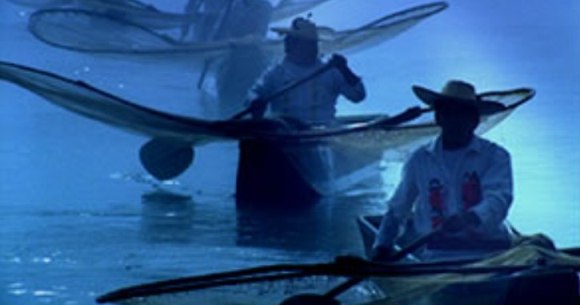Route 3
The Magic of Traditions & Nature
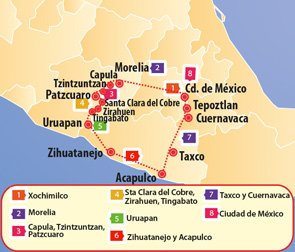 Morelia
Morelia
A stroll around the Centro Historico is enough to reveal the majesty of Morelia, founded in 1541, which was home to wealthy Spanish families during the colonization. Today it is an example of the viceregal splendor, but it is also a dynamic city, venue of one of the most important film festivals in Mexico. After sunset, the cathedral lights up, bars open, the streets fill up with stalls that offer local delicacies and, during an evening walk, it is not uncommon to run into a troubadour reciting the legends of the city.
Morelia can be the ideal base for possible tours around the natural beauty of the state. From here you can begin the route of the lakes, heading towards Pátzcuaro and Zirahuén to finally reach the Eden called Uruapan. In the other direction, and towards México City, you will first find the Insurgente José María Morelos y Pavón National Park, with its dense forests and camping facilities. And somewhat to the north, the panoramic views of Mil Cumbres await the fortunate visitor.
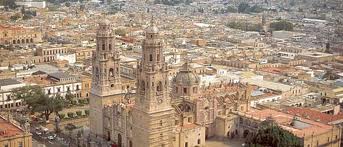 In the city of Morelia, the most representative examples of handcrafts from all of the indigenous communities in Michoacán are gathered in one place. Be it at the market that is next to Palacio Clavijero or at Casa de las Artesanías – in the former convent of San Francisco – the visitor can find this exceptional show of artisan beauty. Ceramics, wood carvings and instruments, hammered copper, basketry, multicolor textiles; you must have patience and bring money, because it is all worth it.
In the city of Morelia, the most representative examples of handcrafts from all of the indigenous communities in Michoacán are gathered in one place. Be it at the market that is next to Palacio Clavijero or at Casa de las Artesanías – in the former convent of San Francisco – the visitor can find this exceptional show of artisan beauty. Ceramics, wood carvings and instruments, hammered copper, basketry, multicolor textiles; you must have patience and bring money, because it is all worth it.
Let us bear in mind that Jose Maria Morelos y Pavon was born in this city called Valladolid; he sacrificed his life to build a nation and this city remembers him with its name, Morelia. This should be enough, but Mexico’s original libertarian heroine, Doña Josefa Ortiz de Dominguez, was also born here; also, the polemic Independence consummator, Agustin de Iturbide, and a long etcetera. There must be something, no doubt about it, about the pink quarry stone in Morelia that drives men to become national heroes.
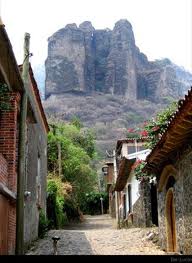 Michoacán’s cuisine is a universe and Morelia is its necessary center. The city faithfully reflects the incredible diversity and astounding creativity of the regional palate: uchepos, corundas, buñuelos, pork patitas, and that’s just the beginning. Carnitas shouldn’t even be mentioned – they are too obvious – as is pozole. Also add a literally Baroque passion for ates, morelianas, charamuscas, guava rolls, and other architectures of sweetness, and do worry about it, because the evident problem will be to decide where to start.
Michoacán’s cuisine is a universe and Morelia is its necessary center. The city faithfully reflects the incredible diversity and astounding creativity of the regional palate: uchepos, corundas, buñuelos, pork patitas, and that’s just the beginning. Carnitas shouldn’t even be mentioned – they are too obvious – as is pozole. Also add a literally Baroque passion for ates, morelianas, charamuscas, guava rolls, and other architectures of sweetness, and do worry about it, because the evident problem will be to decide where to start.
Morelia does not only belong to México, it belongs to the world. The UNESCO knew what it was doing when it declared – in 1991 – its historical center as a World Heritage Site: a practically intact plan from the beginning of the 16th Century, more than 200 buildings with architectural and cultural value, an exceptional urban consistency festooned with pink quarry stone. At night, along the old Calzada Guadalupe, the pedestrian is invited to admire the spectacle of its lit cathedral: an indelible icon of the city, four centuries salute you from its towers.
The former Valladolid gathered in Plaza Villalongín, where more than 250 arches from the massive aqueduct that quenched its thirst come to an end. The always faithful Morelia built starting in 1660, a cathedral to last centuries, sanctuaries as focal as Guadalupe’s, and exceptional convents. It built palaces that are almost literary – like Clavijero – and patios that inspire mystic contemplation; in 1990, the city was named a National Historical Monument. The name, “fountain of historical beauty”, couldn’t possibly be better.
Tepoztlan
Tepoztlan is a magnet for all sorts of travelers. Next to the energetic peaks of the Tepozteco mountain, its small cobble streets receive those who want to enjoy food in its market; those who need a Tarot reading or an Ayurvedic massage; those who are simply looking for something inexpensive in the handcraft street market; those who go to visit the former Natividad convent, declared a World Heritage site; those who climb to the heights to see the pyramid or scale the rocks. Everyone is welcome, and no one regrets having visited.
Tzintzuntzan
The archaeological site that is found here is a look at what used to be the capital of the Tarasca culture. Its pyramidal constructions contrast with the former Franciscan convent found in the town’s plaza, surrounded by olive trees that Vasco de Quiroga himself planted. A few steps away you will find the handicraft market, where local artisans work with wood. In the streets, there are also palm workshops, where palm crafts are created that include religious figures and complete zoos (including fantasy animals).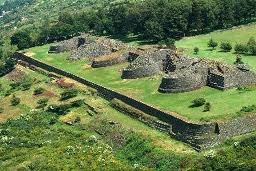
Working with plant fibers is the specialty in this town, and creativity has soared. In the market, and if what you are looking for is a lucky charm, you can find the classical petatillo fish, as well as basketry of every kind, table cloths, various objects and even zoomorphic sculptures of monkeys, horses or cows. Textiles with Pre-Hispanic motifs and pottery pieces are also available because each town around the lake has its specialty.
Tzintzuntzan is practically a synonym for Purepecha. It was once the capital of their empire, was the contact point with European Conquistadors, and is today a sanctuary to their memory. Traditions here go back far in time. The most famous one is Day of the Dead, because of the beauty of the decorations and offerings, and because of the deep fervor that is displayed. The festivity of Señor del Rescate speaks to us about the domestic miracle of a Christ that grows; and the Paloteros dance is something like the musical version of the fall of their reign.
Once the capital of the proud kingdom that resisted the Aztec grasp, Tzintzuntzan is today a small and picturesque town in front of Patzcuaro’s lake. From the Yacatas vestiges we can imagine who those warring Purepechas, also called Tarascos, were: lords of the west and copper alchemists. Famous because of the Day of the Dead festivity, its convent and church, Tzintzuntzan is the adventure of what once was.
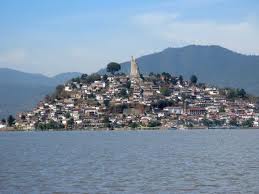 Patzcuaro
Patzcuaro
This Colonial city, which looks like a puzzle made up of red tile roofs when seen from a mountain, is also a breeding ground for artists and intellectuals who have found an inspiring place to settle down. At restaurants such as; La Surtidora or Doña Paca, on the main plaza, tourists and locals come together to taste delicious coffee and regional gastronomy. It is essential to visit La Casa de los 11 Patios (House of 11 Patios), which houses handicraft workshops, or to try sorbets sold at the Portals and to get lost among the market stalls.
Whoever has a special fondness for wood cannot miss visiting the Plaza Vasco de Quiroga; guitars, chairs, trunks, necklaces, everything that originates from a tree and is handmade can be found there. Patzcuaro is the commercial center of the lake region, and here we can also find the black clay, the musical instruments, the copper and other crafts typical to the area.
Pátzcuaro’s biography reflects the history of the Purépecha people. Its history goes back seven centuries; first, it was the capital of the Tarasco kingdom, eventually it became a religious center. It was founded anew when Tata Vasco came to heal the Indigenous heart and eased the difficult time of the conquest with his wit and kindness. Traditions such as the Day of the Dead are witness to his deep ethnic awareness, and the sweet melody of the p’urhé language can still be heard today, as it is spoken by the locals.
The Purepecha culture is a carnival for the senses: a feast of colors, a waterfall of music, a stampede of dance. On the island of Janitzio, one is shaken by the Dance of the White Fish; in the town’s squares one can enjoy Tarascan melodies or Michoacan strains. At the proper time, one can see women in their finely embroidered, smooth guanengo and the skirt which they call “corte”, and which is always in dark colors; the men wear a woven sash over a coarse muslin-like suit. The music plays, the party begins, we are in Pátzcuaro.
Of Mexico’s magical towns, perhaps none is more deserving of the name than Pátzcuaro, because of its historical significance, its cobbled streets and red tiles, because it is a Purépecha town where the language is still alive, and because of everything else you must see, it was classified as a magical town in 2002. The library is located at the Plaza Gertrudis Bocanegra, and on its walls you will find a mural painted by O’Gorman, telling the epic history of Michoacan. Go ahead, visit the library and go to the Plaza de Quiroga, sit down for an ice cream, think about what you will chat with Tata Vasco, whose remains are kept at the Basilica of Our Lady of Health (Basílica de Nuestra Señora de la Salud).
Walk toward the end of the town, toward the docks, and admire Patzcuaro’s natural attraction, its lake. In the distance you will see Janitzio, with its monumental statue of Morelos; the visitor can enter its extended fist, containing a viewpoint overlooking the whole island. Yunuen and Pacanda are nearby, but they can only be reached by boat; they are worth a visit if you are looking for privacy and well-deserved relaxation. The ride from the town of Pátzcuaro to the island is wonderful in itself, and if you are lucky, you will be able to see fishermen with their nets resembling wings.
The lake belongs to Pátzcuaro, just as the city belongs to the lake. Forever at its shore and frozen in time, this town carries us throughout all of the history of Michoacán. Whitewashed stone and adobe, red tile slopes, the constant presence of Don Vasco de Quiroga, the humanist and visionary who wanted to save, not only the indigenous soul, but also the Purépecha individual. In this town, where land touches water, and the history of the nobility, the traveler will fully meet this beautiful and dramatic treasure of the contact between opposites.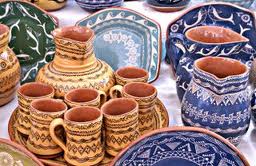
Capula
This small Colonial town remains isolated from the growth of other regions in Michoacán and one feels that one has travelled to a different time as one strolls down its white streets. The pottery tradition is hundreds of years old, however, artisans headed in a new direction when they took the famous catrinas (stylized skeletons) by José Guadalupe Posada and turned them into elegant figures of a thousand sizes, colors and styles. Even so, plant pots, suns and other figures continue to be made.
Among experts in ceramics, Capula is a world-class reference. Its artisans, organized in more than 400 family workshops, have taken the pottery craft to exquisite heights. Made with methods that are sometimes from Pre-Hispanic times, and hand-painted with a pointillist style, the pieces produced can take days to be finished. In their more exotic variety, ceramics in Capula take the shape of attractive Catrinas (decorated skeletons), which have become one of the favorite themes for artists in the community.
Capula is a small, nice town with no further opulence, and it is also a treasure. It has less than 5,000 inhabitants, is located only 15 kilometers from Morelia, and not many people know it. It has that very strong Colonial flavor of so many of Michoacán’s towns, and a stone church. It survives through small family businesses, most of them ceramists, and it is for this reason, more than any other, that Capula is exceptional. Its inhabitants are not really artisans, they are true ceramics artists. Capula is a treasure because of its people.
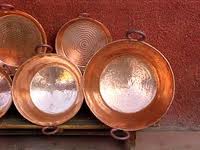 Sta. Clara del Cobre
Sta. Clara del Cobre
In this town, a pot is much more than a cooking utensil. Behind its creation is the history of a city that has built its identity around copper, the material used to make objects that include everything from a simple saucepan to the most Baroque of decorative creations. Although there is a Copper Museum, with outstanding pieces, it is best to visit family workshops, inside small white houses with red tile roofs, to observe the manufacture of each object and get to know the custom of hospitable inhabitants.
In Santa Clara del Cobre, Michoacan, the name says it all. Since the Pre-Hispanic Purepecha people revealed the secret of this metal, during the colonial era, and until its artistic revival during the 1970s, metallurgy has been the steering wheel that runs this town. The national fair and the hammered copper contest are witness of the technical ability of its artisans. Reviewing the offer of its workshops is an experience that challenges reason: who could anticipate such beautiful objects could be made from such a common metal?
Around 1910, a little after the second major fire and at the middle of the mining industry decadence, Creole and Spanish people left Santa Clara in its darkest hour. The Purepecha who stayed were determined to save both the town and the invaluable artisan tradition that characterizes it. Today, in this second golden age, 80 percent of a population that is almost completely native is devoted to working with copper, primarily men. With their traditions and skills intact, Santa Clara shares the ingenuity and warmth of the Purepecha culture.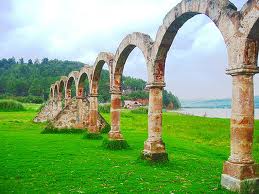
The peaceful Santa Clara has the musical sound of hammering, the smell of metal forging, and the taste of tempered copper; even the Pre-Hispanic vocation was already leading towards metals. Ironically, it went from being the central location for copper during the Colony to almost disappearing and even changing names. We should probably be grateful that the town did not follow the steps of Pito Perez, the famous literary character created by Ruben Romero and inspired by the town. Much history and talent would have been lost if that “useless” name of Villa Escalante had been kept.
Zirahuen
A true paradise for lovers of outdoor sports and nature, Zirahuén – which means “Mirror of the gods” in Purépecha – is full of legends and fantasy: it is a lake in green and blue tones surrounded by thick oak and pine forests. Simply contemplating this landscape, with the musical background of birds singing, leaves the traveler awestruck. Here, you can enjoy fishing, swimming, diving, kayaking and sailing, as well as mountain biking, trekking and horseback riding.
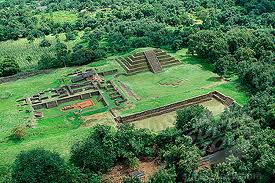 Tingambato
Tingambato
Perhaps the greatest charm of this archaeological site is that many tourists make the mistake of ignoring it, and because of this you can visit the pyramidal constructions, the ball game area and the extensive green areas in almost seclusion. It is also worth visiting the town’s plaza, where the Santiago Apóstol temple is found (a simple construction from the 17th Century), and roaming its streets to find somewhere to try carnitas, corundas and atole.
Uruapan
This is the second most important city in Michoacan, and although its historic center conserves Colonial architecture – its cathedral and La Huatapera hospital are just two examples –, it is a city full of life with more and more entertainment options. The Cupatitzio Ravine National Park is a heavenly place for contemplating the region’s natural wonders: lush trees, exotic flowers and even palm trees. Here, inhabitants are experts in lacquered objects, a technique they use to make trays, bowls, masks and wonderfully elaborated boxes.
It not only was an important Pre-Hispanic dominion and stewardship of the last Purépecha cazonci, Tangaxoán II, but has since been the scene of numerous events in Mexico’s history and its inhabitants are famous for being brave defenders. José María Morelos y Pavón, one of the hero’s of Mexico’s War of Independence, stopped many times at this place — as a mule driver, as an educator, and as a priest – and perhaps this was the reason for which he chose this city as the ideal place for writing the first drafts of the Apatzingan Constitution.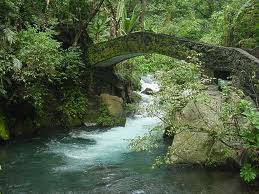
Of course, the typical carnitas of Michoacán have to be present, but in Uruapan we have to taste the Purépecha cuisine. One should begin with the corundas and the uchepos —the region’s tamales –, the churipo —a beef stew — and the hot corn drinks of which the market runs out every day. And to top it all off, there is nothing better than the ice cream being served at the main square, with delicious flavors such as caramel, pistachio, fig, mamey or guava. We should also keep in mind that this is the land of avocados and coffee, both of which are unsurpassed.
Uruapan is home to “what always bears fruit and flowers”, which is the meaning of its Purépecha name, because its lush vegetation has much to offer. One passes by its endless pineapple, peach, banana and avocado orchards en route to the city. Once inside, the Barranca de Cupatitzio National Park hosts a river that flows from a wellspring bearing an enigmatic name: the Devil’s Knee, surrounded by cobbled paths and hanging bridges. Once outside the city, we are bid farewell by a waterfall formed by the same river, with a 20 meter fall.
Uruapan does not have the colonial architecture seen in other places, but it has jewels such as the Franciscan Ex-Convent and the Huatapera, a hospital of “History Telling Skies”, devoted to taking care of the Indians and founded by Don Vasco de Quiroga, which was the first hospital in Latin America. In addition, its central square, which is full of life, its delicious special cuisine and the national park located at the heart of the city, turn it into a city which is considered as one of Mexico’s treasures. Now, let us add to the chest the famous “green gold”, because this is the “World Capital of Avocados”.
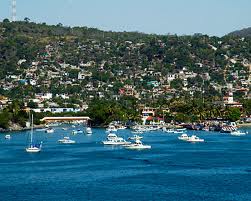 Zihuatanejo/Ixtapa
Zihuatanejo/Ixtapa
What was once a secret beach in Ixtapa, that Aztec emperors visited, became a tourist development during the eighties with large hotels, lush palm trees and cocktails around the pool. However, its sister city, Zihuatanejo, still has the lifestyle of people from the coast and there you will find handicrafts, food and bars that attract both its inhabitants and travelers seeking to explore the “real” life of locals.
If world-class beaches, the nightlife, a sky full of stars and the most romantic sunsets in the hemisphere are not enough for the visitor, Ixtapa offers, in addition, a natural treasure to be discovered; there are swamps, whose native ecosystem showcases awesome crocodiles and exotic birds. There is also Aztlán Park, which connects Ixtapa with Zihuatanejo, in an astounding ecological tour. And for an extreme experience, you can also participate in liberating young turtles to the sea, which happens between June and December.
Next to the city of Zihuatanejo, a heavenly resort was built to respond to the demands of vacationers. The location was ideal because of its long beach, which now competes with the equally long marina, crowded with sailboats and ships. All types of water sports are practiced, but the mandatory ones are deep-sea diving and snorkeling, to admire the intense underwater fauna that can also be seen from above by parachute or atop one of the excellent restaurants with a view of the sea.
Acapulco
The favorite escape of Mexico City inhabitants is a place that has many faces: from the most luxurious, represented by modern hotel developments on the beach, to the nostalgic Acapulco, where the rich and famous from other decades once lay in the sun and had fun. Quite close to the bay are Pie de la Cuesta and Barra Vieja, beaches that are less crowded where you can relax and sunbathe. And in front of Caleta beach, the De los Mares Virgin is submerged by the island La Roqueta.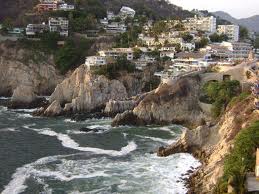
Acapulco was a very important port for the Spanish, who used the place to unload their ships full of novelties from the Philippines for almost three centuries. This relevance as a port always made it an attractive war loot, which is why its participation in Mexico’s history is undeniable. Its role during the Independence was a key factor: José María Morelos y Pavón captured Acapulco and achieved the surrender of the San Diego Fort, the last Colonial bastion in the Pacific. Finally, the Spanish left in 1815 and commerce with the Far East came to an end.
In accordance with its place as an important tourist destination, Acapulco’s gastronomy is broad and varied. There are plenty of options with accents from all over the world, to choose the type of experience you want or to feel healthy. The coastal avenue groups include most of the restaurants, but there are excellent alternatives in other parts of the city. The inevitable dishes are pescado sarandeado and cocteles (Mexican seafood salads), as well as ceviche.
In spite of the years of construction, the panoramic view of the Santa Lucía bay continues to be spectacular; and this is because it is really difficult to hide the true natural beauty of Acapulco. It can be appreciated as a tourist at the well-known Papagayo Park, which in addition to seaside resort attractions is also an ecological reserve with vast green areas and a large number of exotic species in captivity. If you want something more peaceful, take a boat to tour around Coyuca Lagoon, on the opposite side of Pie de la Cuesta beach.
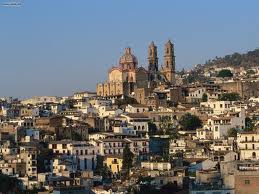 Taxco
Taxco
Maybe it is the location, perched on the mountains, that has made Taxco conserve the charm of a small city which, however, was born in splendor as the product of silver mining around it. It was the most important ‘real de minas’ during the Colony, and José de la Borda, the most important miner in the history of Mexico, commissioned the magnificent Sant Prisca church, a Baroque jewel. It is still a favorite of people looking for silver jewelry, and there are many ecotourism options in its surroundings.
Among its labyrinthine and cobbled streets, you can find virtually anything that can be made in silver. This important mining center is the Mecca of jewelry in Mexico; many producers come here for quality metal and precious stones of all kinds, sold in bulk. Beyond the specialty of the house, there are also other wood and textile handicrafts.
In Taxco, not everything is silver; food is equally valuable and brilliant. In addition to Mexican traditional food and Guerrero pozole, some come here to test their courage with jumiles, an insect that is eaten alive on a tortilla with salsa. Because of the continuous influx of visitors from all over the world, the offer goes further and there is everything from pizzas and hamburgers to good salads and international cuisine.
The cobbled streets that run uphill and downhill, the markets and the handicrafts, the architectural beauty, the silver shops, the cable car and the people that fill its streets with life and color make Taxco de Alarcon one of Mexico’s most beloved treasures. To all this, we must also add a pleasant climate and delicious food, in addition to first-class hotels and services. Its Colonial Art Museum evidences the wealth of this old mining city with the best panoramic views of the region.
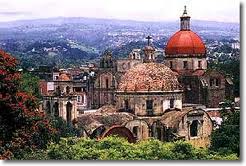 Cuernavaca
Cuernavaca
Maximilian had his country home here, and his example was followed by people from Mexico City and other nearby cities, for the city’s exceptional climate makes it an attraction that brings joy throughout the year. Emiliano Zapata, the ultimate revolutionary leader, established his headquarters there. A visit to the famous Cortés’ Palace is worth it, which was home of the Conquistador; also, the Borda Garden (created by the Habsburg family), the imposing cathedral and the Teopanzolco archaeological site, in honor of the gods Huitzilopochtli and Tláloc. If you visit during carnival times, so you can see the chinelos dancers in colorful attire.
The Colonial architecture in Cuernavaca and its magnificent Palacio de Cortés are proof of the historical importance that it has always had. In Pre-Hispanic times, it was a place that Tlahuica, Chihimeca and Mexica peoples struggled over. During the Colony, it was consolidated as a lead city and concentrated the sugar cane production.
The epithet “City of the Eternal Spring” is no coincidence: Cuernavaca has an exceptionally good climate throughout the year and is overpopulated with flamboyant, jacaranda and bougainvillea trees. It also has a waterfall at the bottom of a ravine, known as Salto del San Antón, and the spectacular Borda Garden, populated by hundreds of fruit tree and ornamental plant varieties. And to go further, there are countless options in the city for ecotourism and for observing wild flora and fauna.
Mexico City
Everything comes together in this huge city, the oldest in the American continent: Colonial buildings, Pre-Hispanic vestiges, and the whirl of contemporary living. The variety of cultural spaces and heritage sites has given it a cosmopolitan nature. Neighborhoods – all different – offer bohemian, sophisticated, fun, and educational experiences, as well as much more. And exploring the Centro Historico (downtown area), where everything began, is undoubtedly something you cannot miss. In the range of possibilities in Distrito Federal, or simply DF as the locals call it, there are rural areas: capsules of peaceful green like those offered by tours around Xochimilco canals and chinampas (small land areas in the shallow lake bed) still survive, as well as the very beautiful landscape that once dominated the marshy valley.
Near Cumbres del Ajusco, trees cover the mountains that surround the city and you can be witness of the recuperation of species like the white-tailed deer and the volcano rabbit, or zacatuche. In Desierto de los Leones, hiking lovers will find a combination of old convents and lush forests; all of this is available without leaving the city.
Mexico City itself has four designations as World Heritage Sites. In the Centro Historico – the City of Palaces – the opulent Colonial architecture rests over vestiges of the former Mexica metropolis. In Xochimilco, nature is conserved between channels and trajineras (traditional boats), like an American Venice. Ciudad Universitaria and Casa Estudio de Barragan are two jewels – one huge and one miniscule – of Mexican modern architecture, and they reflect the building creativity of this fascinating city.
The wealth in DF goes beyond its condition of great metropolis. Its Anthropology Museum rescues the millenary memory of the whole country. In the National Palace, murals scrutinize the Mexican identity, and next to it, the entrails of the Templo Mayor indicate that this was, once, an imperial capital. Sumptuous places like the Auditorio Nacional or Bellas Artes present the best in scenic arts, and the constellation of museums protects the essence of Mexican plastic expression. Mexicas and Conquerors already knew it: this city is a treasure in itself.
It probably seems like an exaggeration, but this city has no limits. It listens to all sorts of music: jazz in nightspots, opera in palaces, mariachi in cantinas, rock in stadiums, boleros, classical, Pre-Hispanic chants. It dances every rhythm: duranguense in rodeos, ballet in stages, danzón in gardens, cumbia in dancehalls, electronic in afterhours. It dresses in every manner: huipil or suit, guayabera or charro hats, fashionable high heels or leather sandals and a penacho (feather crown). Singular and giant, traditional yet cosmopolitan, Mexico is one of the few cities that contain a country, and within its boundaries a world in culture.
To book a trip through the Route 3 Region, please send us an email to; info@weareonetravel.com or fill in the Contact Form on the right hand side of this page.
